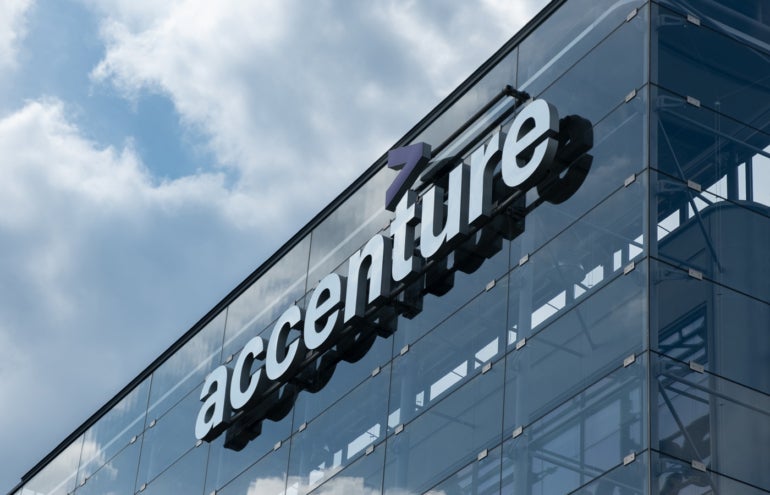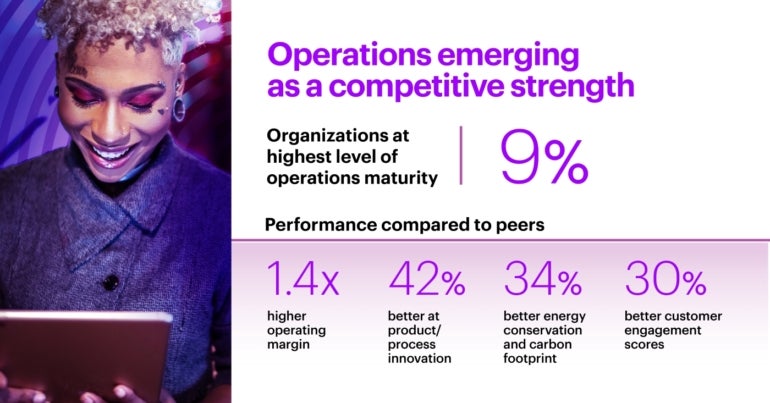

Australian enterprises are moving into a “readiness” phase of generative artificial intelligence adoption and will be relying on IT leaders to work with internal and external partners to bring their expansive vision to life, said Accenture’s Director of Applied Intelligence Kelly Brough.
With the AI landscape changing fast since the launch of ChatGPT in late 2022, Brough said organisations had moved through discovery and experimentation phases with generative AI and were now preparing in earnest to adopt and reap the benefits of AI at scale.
Brough told TechRepublic that IT leaders are playing a crucial role in understanding and managing the true enterprise costs of running AI and are working with business and ecosystem partners to apply it in areas of most impact for organisations over the next 12–18 months.
Jump to:
Accenture’s clients include large Australian enterprises in multiple industries. Brough says it is often technology leaders, including chief information officers and chief architects, that are bringing a pragmatic lens to discussions around the utilisation of AI in their organisations.
IT leaders are often the people highlighting the difference between project costs and total cost of ownership, she said, as well as looking closely at technical details around required changes to enterprise architecture or components that may need to be made to facilitate an AI model.
“Underpinning that is the question: ‘Are we thinking this through carefully enough when we are making these choices?’” Brough said. “While generative AI may be the shiny new thing for a little while, IT leaders are the ones asking if it is the most cost-effective way to achieve the desired outcome.
“That’s because they’re the ones who need to make the tech work and keep it working without amassing a huge amount of tech debt and maintain it efficiently and effectively into the future.”
Organisations are still figuring out how to manage successful AI projects. Accenture is seeing that the successful projects are the ones that bring IT teams and business stakeholders together.
“It’s less about it being business-led or tech-led,” Brough said. “Where we see it coming together — where we are seeing the fastest time to market, the strongest outcomes and the best approaches — is where there’s been the most successful combined embrace of change in business processes to get the most out of the technology.”
Often, this is difficult to achieve. One tech leader from an Accenture client, for example, was recently asking for ideas on how to get business buy-in. While they could see the potential, they were not having much success in engaging the business in the potential advantages of AI.
SEE: Refresh your AI knowledge with our artificial intelligence cheat sheet.
Brough said organisations are filled with people, who naturally bring a lot of perspectives and options. The challenge will be for leadership and executives to select investment priorities, even in economic conditions where investment decisions will require trade-offs.
“A big part of the answer is the ability to line up behind a set of priorities,” Brough said.
AI projects will require IT leaders within organisations to better manage their partners.
“The market is suggesting successful AI projects involve between four and six partners,” Brough said. “That’s another consideration, and it’s not just about selecting those partners but also about asking how they uplift their acumen in managing relationships with those partners.”
Organisations are being urged to go beyond seeing these players as vendors, as they may need to work collaboratively with one or two cloud partners, a foundation model supplier or two, and other advisers around change and traditional system integration considerations.
“Some of the success will be driven by how partners come together to form an ecosystem — we talk about the importance of ecosystem management, because it’s a skillset. A lot of clients have made that shift, but there are plenty where that capability continues to be uplifted.”
Prior to the launch of ChatGPT, data, analytics and even advanced analytics had been on a lot of organisations’ agendas for the past five or more years, according to Accenture.
“A lot of the conversations during that time were around very specific parts of their business reliant on data, and asking ‘How can insights give you greater confidence in decision making?’” Brough said. “That evolved into how the use of advanced analytics and algorithmic outputs could start to automate some of the decision making inside of these organisations.”
The release of ChatGPT has amplified that, with organisations in 2023 moving first through a generative AI discovery phase into an experimentation phase with potential use cases.
Now, organisations have entered what Brough is calling an enterprise readiness phase, which includes looking at the end-to-end business process implications of adopting all forms of AI.
“They are asking things like: ‘Is my data ready? Do I have a modern platform, with the right governance, tools and policies to manage data to execute generative AI use cases across the organisation?’” said Brough.
They are also asking if their people are ready to produce work or augment decision making with an exploding number of AI tools, or even create AI algorithms themselves.
“Enterprise readiness is about having a more fulsome understanding of what they need to take into account to make the choices they need to make to deploy AI across their organisation,” said Brough.
While enterprises differ in their level of AI maturity — and even tech-savvy firms like software companies are still coming to terms with it — similar priorities are being established.
“Some of Australia’s biggest businesses… are asking what are the individual use cases or functions within their business where AI can have a large impact,” Brough said.
One non-industry specific use case that is popular right now is how organisations might use an AI-based copilot to help IT teams develop code faster, test code more efficiently or automate the production of tech scripts, so they can take the effort out of some of that work.
Most organisations are swimming in a long list of potential use cases for AI. Brough said that one of the best questions to ask is where there are bottlenecks it can help alleviate.
“One of my favourite examples is where I find it difficult to get an appointment with my GP,” Brough said. “It could speed up the process of capturing notes, so GPs could spend more time patient facing — I think there is a huge, exciting opportunity there across the health landscape.”
SEE: Access an artificial intelligence ethics policy from TechRepublic Premium.
Brough said that projected enterprise deployments over the next 12–18 months will result in a relatively large-scale adoption of new AI technologies, including but not limited to generative AI. She said these are likely to “span the value chain of most organisations.”
Throughout this period of adoption, the AI tools organisations are embracing will start to be more industry specific, and focused around key sources of cost advantage, as organisations ask how they might use different models to optimise output, efficiency and decision-making.
“For example, we are seeing this applied in a retail context to assist merchandisers with selecting the range and the individual assortment on shelves of local stores, optimised for customers in a particular catchment zone or individual outlet,” Brough said.
Accenture’s recent Reinventing Enterprise Operations report found nearly three quarters (73%) of companies were prioritising AI over all other digital investments, with the immediate focus on improving operational resilience in an unprecedented environment (Figure A).
Figure A

The survey found that 90% of business leaders were applying AI to tackle aspects of operational resilience, which Accenture said spans data-driven capabilities, from finance (89%) and supply chain (88%) to experimentation with generative AI.
Brough said logistics is a key use case, as AI could improve efficient routing of deliveries and have other applications across the supply chain. Contracting is another area of potential as organisations experiment with generating core contract terms and then modifying them.
Brough said she can remember a time as a child when computers first arrived in her school. Once a week, she would get to go to the computer room and type on a computer or play a game.
“It was a different world, but it sparked a curiosity about what could be possible in the future,” Brough said.
She is now living in that future — and she is positive about the implications of AI.
“At a macro level I am vastly more optimistic than worried about AI. That is of course with the assumption we are all using the technology responsibly,” Brough said. “Responsible AI is a critical foundation of creating the trust required for organisations, customers and society in general to adopt it.”
There will, of course, be risks to consider. Brough notes the ongoing discussions about the potential underlying bias of data used to train large language models, the quality of algorithms, how humans are looped into decision making and how to best automate processes within an organisation.
“There are some tangible and practical things to be thinking about as you apply your own risk appetite and risk policies to this technology as you deploy it within your organisation.”
IT leaders, for the most part, also seem to see the positive sides of AI.
“In general, I would say most technologists are quite optimistic about the potential of AI overall, and the ability to use the vast amounts of data that most organisations generate to create really interesting applications and business outcomes,” Brough said.
In fact, there may be no one better placed within the organisation to do it.
“Technologists really understand where their organisation’s hidden data can create value; they know where some of those rich assets of the business are,” Brough said. “IT leaders often know if the real crown jewels of their organisation is sitting where no one is looking.”
To take advantage of the AI revolution, Brough said IT leaders should identify a place in their organisation to get started.
“Reading about it and listening to others talk about it will not give you the same lessons learned as experimenting with it will,” said Brough.
They should also think expansively.
“The tech is moving fast, and it will pay dividends to those who get started and realise the benefits as they start to scale it across their organisation,” said Brough.